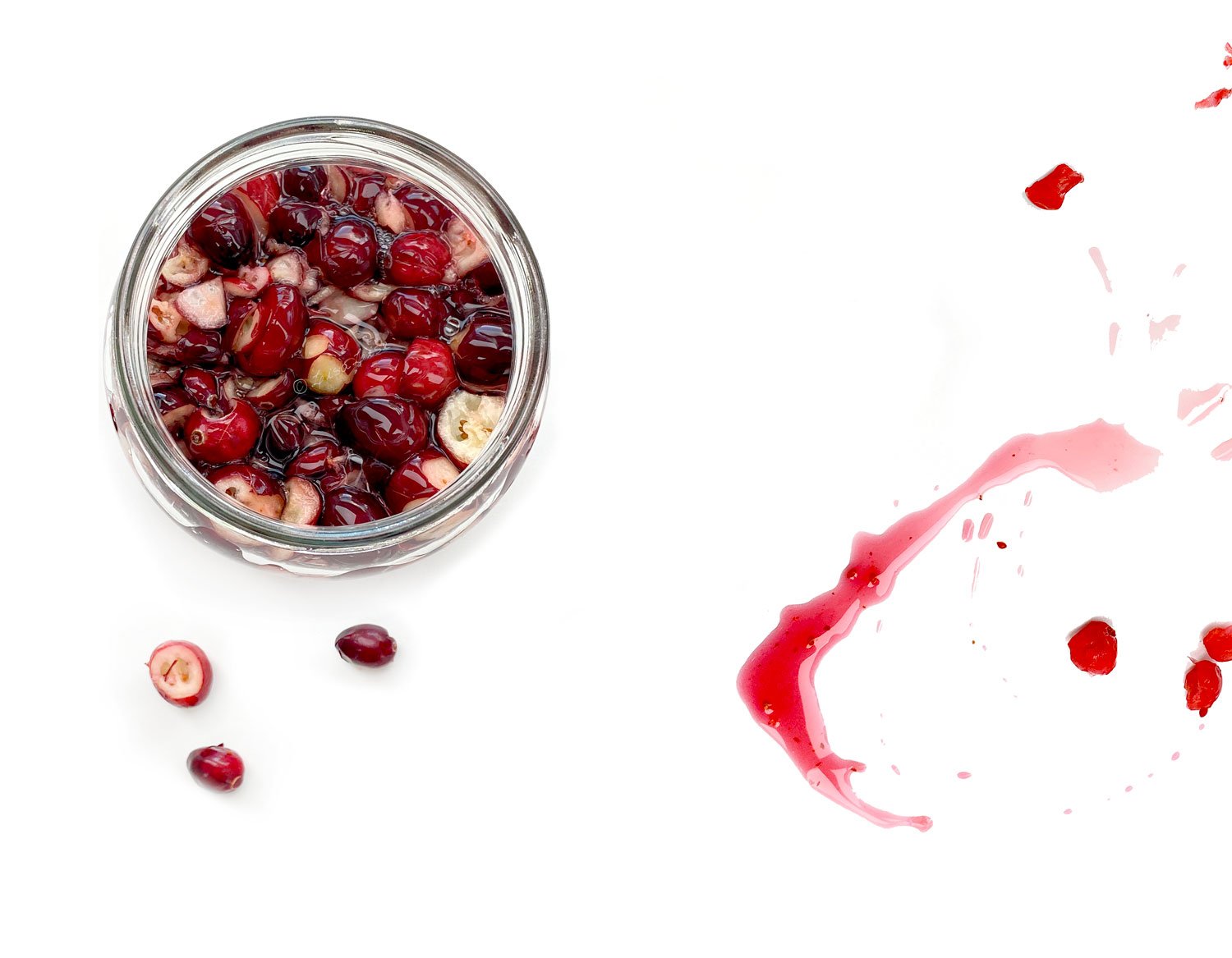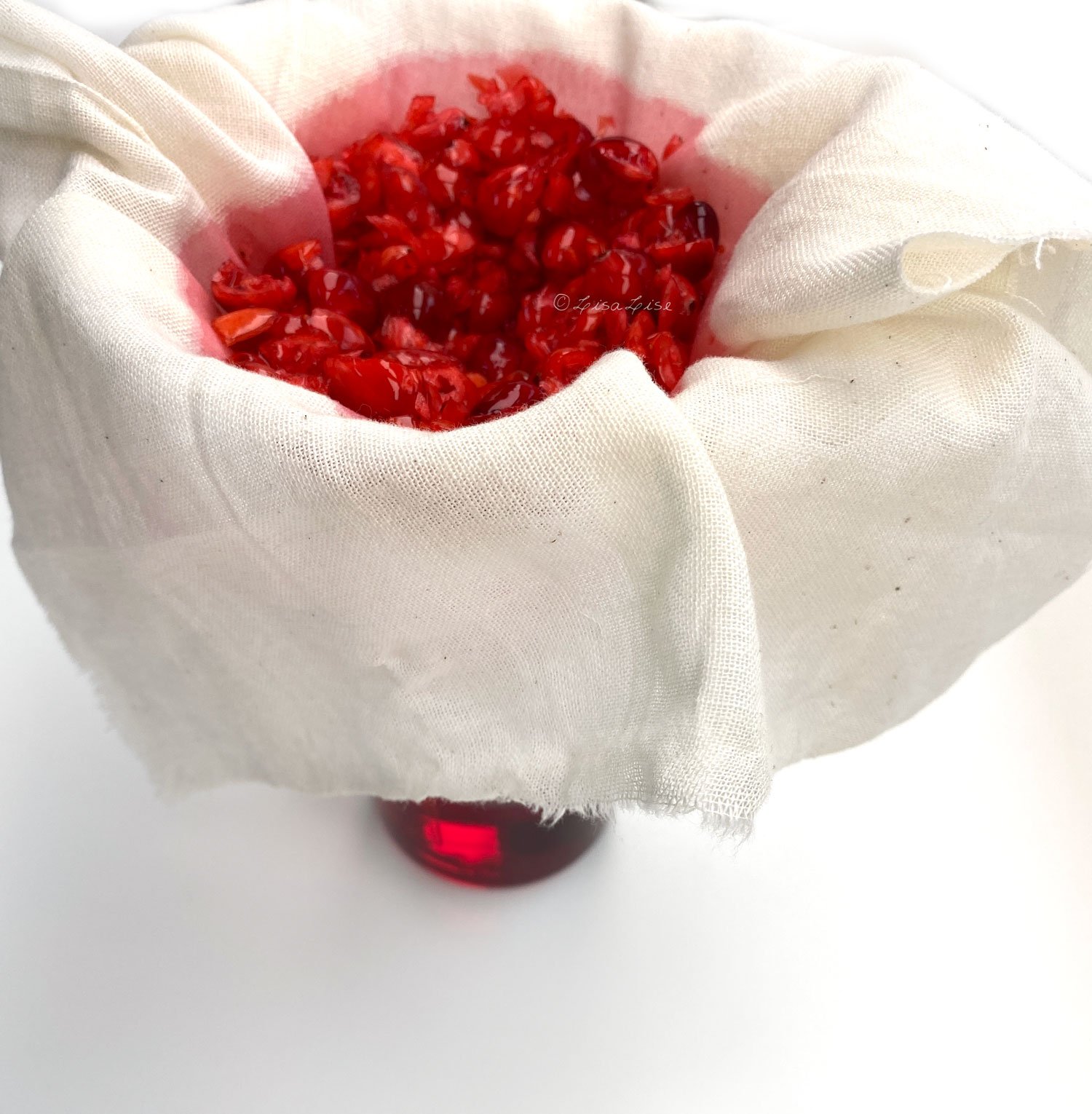How to Make a Self Preserving Cranberry Glycerite
Lise
The other day, we looked at cranberries and what they have to offer. Today, we're going to get busy with them and make a self-preserving cranberry glycerite.
Pictured above is the beginning of the glycerite on the left, and a splash of the end product on the right (I sneaky put 2 pictures together to show you everything in one picture)
My fab formulating friend Marie of Humblebee & Me I are both in the holiday spirit with cranberries this year, so we decided to get together and discuss cranberries, glycerites and formulating.
If you want to see and hear us chatting about how to make this cranberry glycerite, pop over to Humblebee & Me’s YouTube channel right here.
Meantime, here's the how-to I did for Marie to make and use in a few of her cranberry-themed formulations.
This batch size is for 200 gr / 7 oz in total and is calculated for fresh or frozen cranberries. (Please note that raw materials vary in water content, so if you want to substitute the cranberries with another fruit/vegetable/herb, choose a raw material that has a similar water content)
Expect some product loss during straining - especially if you don't have any special straining equipment.
Cranberry Glycerite Ingredients
44 g / 1.6 oz Fresh (or frozen) cranberries
156 g / 5.4 oz Glycerine (Cosmetic or pharmaceutical grade)
Method
Clean and sanitise your workspace, tools and equipment, and wear protective gloves. (I wrote a guide on Good Manufacturing Practice for Artisans if you are unsure of how to go about this)
Inspect the cranberries carefully. Discard any berries that are damaged or less than perfect.
If using fresh cranberries, rinse in distilled/demineralised water and allow to dry on a clean towel
Chop or crush the cranberries
Weigh cranberries and add to a sanitised jar
Add glycerine to the specified weight
Cap the jar and allow to stand at room temperature away from sunlight.
Agitate the jar daily.
After 5-10 days, strain (see photo below)
Label and date the bottles. Store them cool and dark (a refrigerator is ideal).
2-Step Glycerite Straining Tip
Here’s a photo of the straining process of this batch where I used a single layer of cheesecloth/muslin and allowed gravity to do its work all by itself for the first step.
When it stopped dripping through the cloth (after about half an hour), the liquid was decanted to a sanitised bottle.
I then gathered up the edges of the cloth (with gloves on!) and squeezed out as much liquid as I could. The liquid was bottled in a separate sanitised bottle and labelled.
Why 2 steps?
For some products (think skin tonic, gel or other clear cosmetics), it can be an advantage to be able to add a clear ingredient. For products where opacity may not matter as much (think lotions, creams, emulsified serums) , it’s fine to use the ‘squeezed’ glycerite.
Above is a peek at what an ‘unsqueezed’ vs a ‘‘squeezed’ glycerite looks like. The glycerite on the right was allowed to drip through the straining cloth at its own speed and is clear. I placed a sprig of lavender behind the bottles to demonstrate the difference in opacity. (These 2 bottles are not from this batch but from another batch using fresh cherries).
That popping red color is a bit of eye candy if you ask me.
Want to see what Marie used her glycerite in? Learn how to make her frosted cranberry face cream right here.
Glycerite Shelf Life
Stored cool and dark, your glycerite can last up to 2 years, but if you want to use it in a cosmetic, I recommend using it (well) within 6 months of making.
Are You New to Glycerites?
This post goes into a bit of detail about glycerine/glycerol and its many properties and uses. You’ll also find links to more glycerite-making how-to’s.
The e-book below can show you how to compose and make your own glycerine extracts using almost any kind of raw material. Included are calculation charts for glycerites with preservative and for self preserving glycerites. There are also 6 formulations included that feature handcrafted glycerites. Click the picture to read more.






